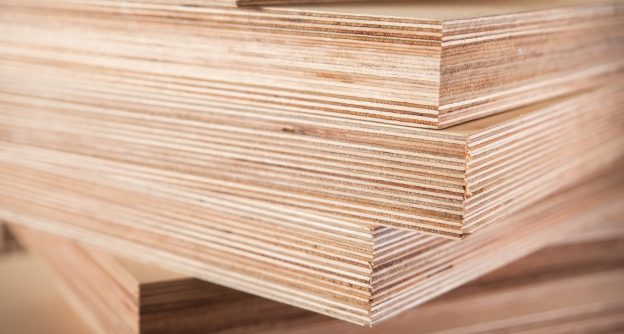The Actual Thickness of a Sheet of Plywood
Plywood is often sold in 1/4“, 1/2“, or 3/4” nominal thicknesses, but the actual thickness is often 1/32” thinner. Because the actual thickness may vary measuring the plywood is the only accurate way to determine its thickness.
- A 3/4” sheet is actually 23/32” thick.
- A 1/2” sheet is actually 15/32” thick.
- A 1/4” sheet is actually 7/32” thick.
Why is a 3/4” Sheet of Plywood Less Than 3/4” Thick?

There are a few reasons why the actual thickness of plywood varies. First, wood shrinks as it dries and moisture leaves the wood. This means that a sheet of plywood that started at 3/4” may shrink slightly after manufacturing.
Another reason for varying plywood thicknesses is a range of manufacturing tolerances. Sheets are available in hardwood or softwood veneers, and in varying grades including sanded and unsanded. These different grades have different manufacturing tolerances and may vary more or less from the 3/4” nominal thickness.
Plywood is almost always thinner than the nominal measurement due to the fact that most tooling in furniture and cabinet factories and manufacturing facilities can accommodate plywood that is thinner than expected but not thicker than expected. For this reason it is very common to see actual thicknesses on the thinner side and rarely thicker than the nominal measurement.
Common Plywood Dimensions
Plywood is most often sold in 4′ x 8′ sheets, but may also be available in 4′ x 10′, 4′ x 12′, or 2′ x 4′ sheets. Our plywood calculator can estimate the number of 4′ x 8′ sheets needed for a project.
Plywood is usually sold by the sheet, but in some rare cases it may be sold by the board foot. Board footage is a measure of the volume of wood in the sheet. Our board footage calculator can help calculate how many board feet you need if your plywood is sold using that measure.
| Nominal Thickness | Actual Thickness |
|---|---|
| 1/8“ | 7/64“ |
| 1/4“ | 7/32“ |
| 3/8“ | 11/32“ |
| 1/2“ | 15/32“ |
| 5/8“ | 19/32“ |
| 3/4“ | 23/32“ |
| 1-1/8“ | 1-1/8“ |
Reference: https://www.inchcalculator.com/actual-plywood-thickness-size/
